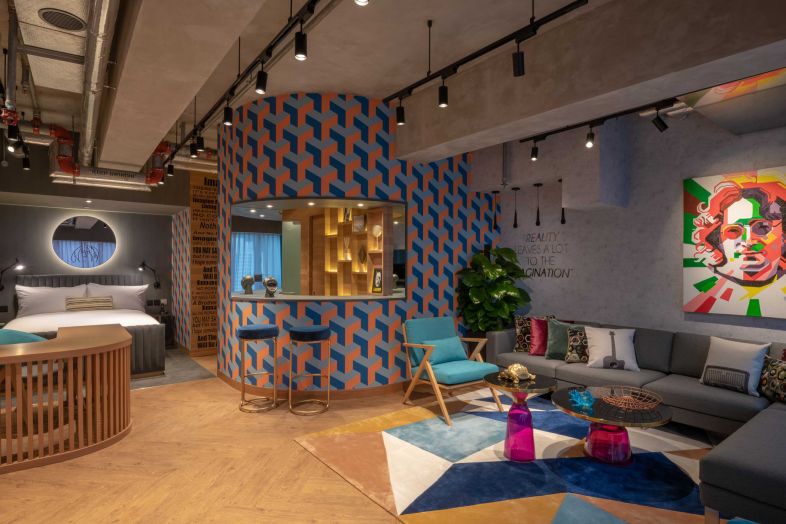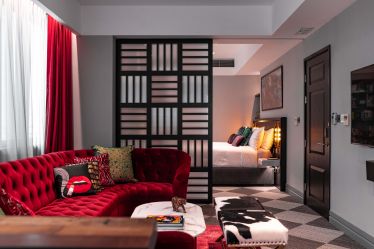
Complete Guide to Hotel Architecture and Design
If we could choose the most important factor contributing to guest satisfaction in the hospitality field, it would be hotel architecture and design. The layout and design of your hotel tells a story and completely defines the visitors’ experience during their stay.
In the modern world, hotels are no longer just a place to sleep the night. Instead, it is a place that provides guests with the opportunity to experience the culture of the location they are visiting, to try, feel, discover, and relax at the end of the day.
Key Elements of Successful Hotel Architecture and Design
To run a successful hotel today, you need to stop thinking linearly or only consider aesthetic and functionality. On the opposite, proper luxury hotel architecture and design takes into consideration ALL aspects of the guest’s stay, - not only physical, but also emotional. The ultimate goal of hotel exterior and interior design should be to create unique and unforgettable experiences for the traveler.
Here are a few key elements a hotel owner should keep in mind when hiring a designer or a design firm for their property in order to achieve a holistic and unique result:
1. Tell a Story
The modern philosophy of hotel design is all about telling a story. When building or redesigning a hotel, it is important to create a unique concept, which shapes the identity of the hotel and guest experience. Make sure that the forms, materials, and functionality of different spaces throughout the hotel reflect your concept and design inspiration, as well as tell your story.
In your hotel concept, consider things like:
- The hotel’s architecture and design concept
- Hotel’s facilities, such as wellness facilities or restaurant and food branding
- The Signature Experiences that the hotel offers to its guests
- Operational procedures, which should align with the main idea
- Hotel branding and communication strategies

2. Reflect the Location and External Elements
The climate conditions of the geographical location should be one of the most important factors in the hotel architecture and design. The weather outside should greatly determine how the outdoor sections of the hotel will look like, and how they will interact with the interior sections.
When designing a hotel, it is important to consider the orientation of the building and how the sun moves around it. The design of the zones, the functions, as well as the choice of textures, colors, and materials, should be inspired by the hotel’s “collaboration” with the sun and its surroundings.
3. Make Great First Impression
During the hotel architecture and design process, the architect or designer should consider a few key areas of the hotel’s interior.
The hotel’s entrance is the first reception point for the visitors. The entrance is what shapes the client’s first impression, so it is crucial to positively predispose the visitor from the first few seconds.
Make sure that aesthetics of the entrance are aligned with the hotel concept. Functionally, the entrance area should allow the easy passage of visitors and staff. In addition, the entrance should be easily found from the street, - we don’t want to have tired travelers struggling to find the entrance!
The design and layout of the reception area should provide a sense of intimacy, which, when combined with a warm welcome from the staff, gives the visitor the confirmation that they’ve made the right choice with the hotel.
Do not be afraid to make the lobby area the focal point of your property. Visitors tend to gather in this space, and unique design and aesthetics will encourage them to take photos and share them on social media, giving you free advertisement and attracting more clients.
4. Pay Attention to the Guest Rooms Design
The hotel room is the one place where the travelers sleep, relax, and make the final decision of whether they’ve made the right hotel choice.
The hotel’s story should be captured in all the small details and elements that make up the room. It is also a good idea to divide the room into smart functional zones, such as a sleeping area or a recreation zone.
A spacious shower, a comfortable bed, and adequate storage for luggage and clothes are the absolute musts of a pleasant stay at the hotel.
5. Design Common Areas for Experiences
The hotel’s socialization and activities areas, such as breakfast and lounge areas, the restaurant, or the pool, are all essential elements contributing to the overall experience of the visitor.
All the common areas should reflect the branding of the hotel and provide a fun and lively experience to the guests. When designing these areas, focus on both functional and aesthetic needs of the clients coming from various cultures and with different experiences. Invite them to share a common experience and live through the story you are trying to tell.
The floor plan should include separate areas for fun, relaxation, socialization, gastronomic indulgence, and make it easy for people to interact and create memories. When building the design concept, study the travelers’ habits and how they will be translated into experience.
Let the Professionals Take Care of Your Hotel Design
To run a successful hotel business, you need to keep every little detail in mind. The right hotel architecture and design will lead to happy guests experiences, who leave positive reviews and bring in more business.
Luckily, architects and designers at ALT can truly tell a story and present a unique result that will guarantee a top-notch experience for every visitor. Contact us today for more information.
Building an amazing hotel experience for your clients
Categories
- Contemporary Architecture
- Luxury Homes
- Mid-Century Modern
- Modern Luxury Housing
- Brutalist Architecture
- Beachfront Property
- Exclusive Properties
- Luxury Villas
- Waterfront Homes
- Modern Luxury Homes
- Contemporary Designs
- Design Elements
- Modern Architecture Design
- Modern Design
- Architecture Company
- House Architecture Designs


